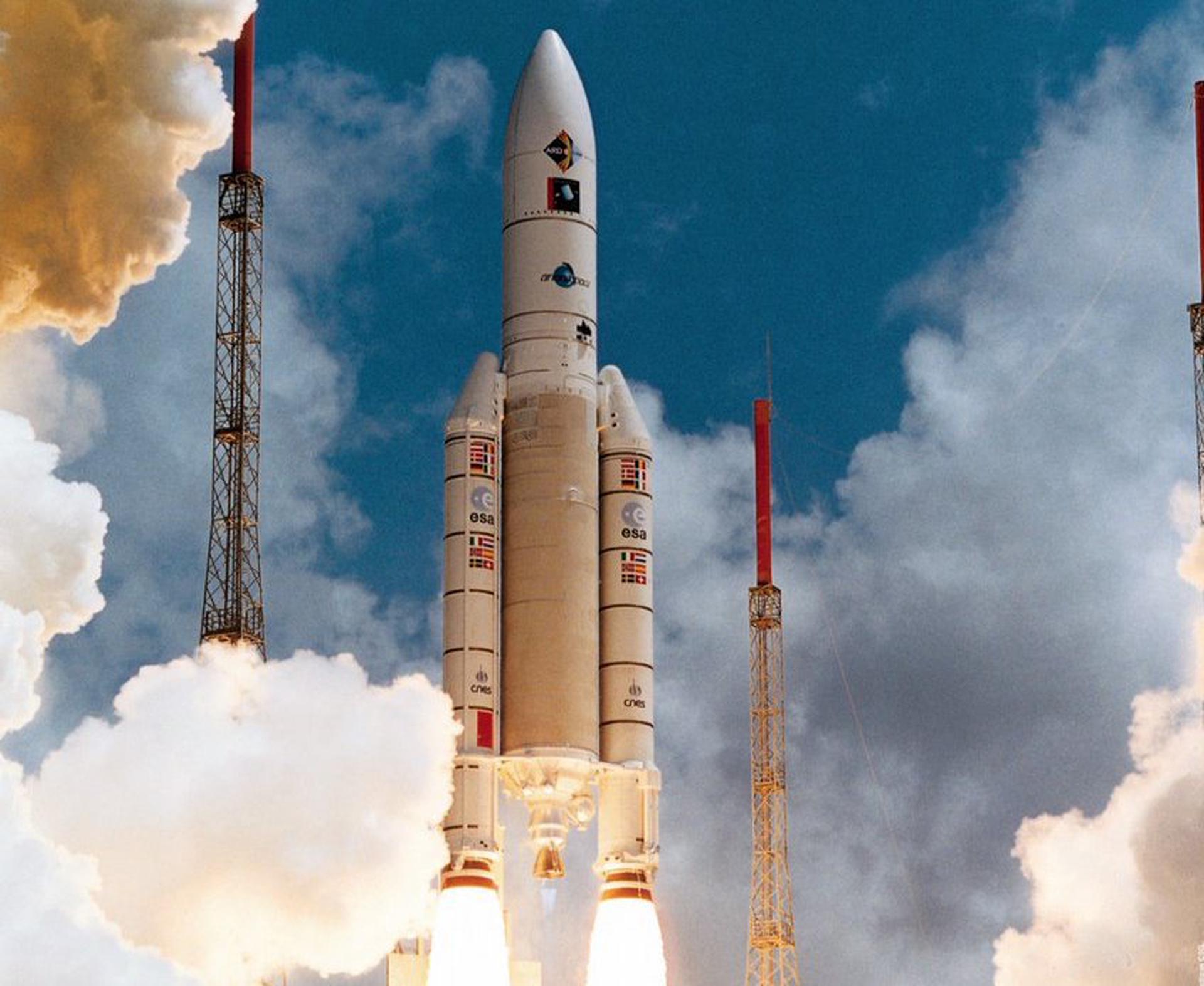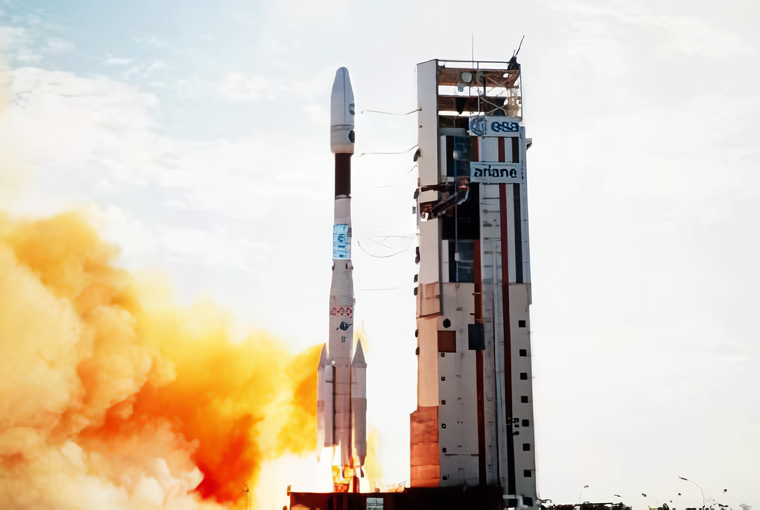Previous Spaceflight Launches
Filter by Agency, Locations or Vehicles
Show All LaunchesProton-K/DM-2M | Sesat
Khrunichev State Research and Production Space Center | RussiaBaikonur Cosmodrome, Republic of Kazakhstan
April 17, 2000, 9:06 p.m.
Status: Launch Successful
Mission:
The SESAT 1 (Siberia - Europe SATellite) provides a wide range of telecommunications services over a very large geographical coverage area extending from the Atlantic Ocean to Eastern Russia, including a large part of Siberia. The satellite also provides similar services within the Indian Sub-Continent by means of a Steerable Spotbeam. Sharing the 36° East orbital position with the Eutelsat W4 satellite, SESAT contributes to the development of international, regional and domestic services, such as thin route telephony, corporate and specialised data services and long distance trunk telephony. It facilitates the development of new markets in far eastern Europe and southern Asia for all types of telecommunication and business services, as well as providing full interconnectivity with western and central Europe.
Geostationary OrbitSoyuz-U | Soyuz TM-30
Russian Federal Space Agency (ROSCOSMOS) | RussiaBaikonur Cosmodrome, Republic of Kazakhstan
April 4, 2000, 5:01 a.m.
Status: Launch Successful
Mission:
Soyuz TM-30 was the 39th mission and the 28th long-duration expedition to Mir space station. It was the final human spaceflight to Mir. The mission began on April 4, 2000, 05:01:29 UTC, launching Commander Sergei Zalyotin and Flight Engineer Aleksandr Kaleri into orbit. They docked with Mir two days later. During their stay there, cosmonauts performed an EVA and various maintenance and repair tasks. Station crew was visited by several Progress resupply spacecrafts. The mission was privately funded by MirCorp company, which planned to refurbish and privatize the aging Mir space station, however insufficient funding and investment made these plans impossible to come true. The mission concluded with a safe landing back on Earth on June 16, 2000, 00:44 UTC.
Low Earth OrbitDelta 7326-9.5 | IMAGE
McDonnell Douglas | United States of AmericaVandenberg SFB, CA, USA
March 25, 2000, 8:34 p.m.
Status: Launch Successful
Mission:
IMAGE (Imager for Magnetopause to Aurora Global Exploration) uses neutral atom, ultraviolet, and radio imaging techniques to identify the dominant mechanisms for injecting plasma into the magnetosphere on substorm and magnetic storm time scales, determine the directly driven response of the magnetosphere to solar wind changes; and, discover how and where magnetospheric plasmas are energized, transported, and subsequently lost during substorms and magnetic storms.
Elliptical OrbitAriane 5 G | INSAT-3B & AsiaStar
ArianeGroup | FranceGuiana Space Centre, French Guiana
March 21, 2000, 11:28 p.m.
Soyuz-U-PVB | Dumsat
Progress Rocket Space Center | RussiaBaikonur Cosmodrome, Republic of Kazakhstan
March 20, 2000, 6:28 p.m.
Zenit | ICO F1
Sea Launch | RussiaSea Launch
March 12, 2000, 2:49 p.m.
Taurus 1110 | MTI
Orbital Sciences Corporation | United States of AmericaVandenberg SFB, CA, USA
March 12, 2000, 9:29 a.m.
Status: Launch Successful
Mission:
The primary objective of MTI (Multispectral Thermal Imager) was to demonstrate advanced multispectral and thermal imaging, image processing, and associated technologies that could be used in future systems for detecting and characterizing facilities producing weapons of mass destruction using radiometrically accurate, high spatial resolution, multispectral imaging.
Polar OrbitProton-K/DM-2M | Ekspress 6A
Khrunichev State Research and Production Space Center | RussiaBaikonur Cosmodrome, Republic of Kazakhstan
March 12, 2000, 4:07 a.m.
Status: Launch Successful
Mission:
Express-A satellites are designed for operation in the fixed satellite service. Their transponder payloads make it possible to retransmit all types of traffic, including television and radio programming, telephony, data, videoconferencing as well as high-speed Internet.
Geostationary OrbitAriane 44LP | Superbird B2
Aérospatiale | FranceGuiana Space Centre, French Guiana
Feb. 18, 2000, 1:04 a.m.
Proton-K/DM-2M | Garuda 1
Khrunichev State Research and Production Space Center | RussiaBaikonur Cosmodrome, Republic of Kazakhstan
Feb. 12, 2000, 9:10 a.m.







